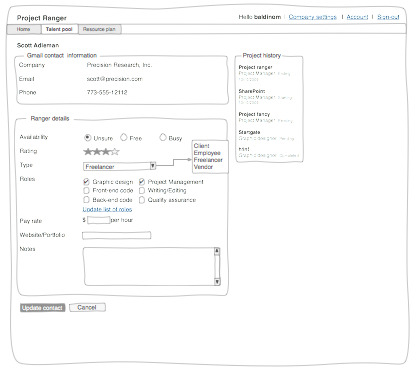Genius is one percent inspiration and ninety-nine percent perspiration. – Thomas Edison
‘Rapid prototyping’ has become a hot phrase in design and business in the recent past. The popular phrase is a highly effective design method, a method that companies like Apple and IDEO have made well known and respected as a key to innovation.
The ‘rapid’-ness emphasizes the iterative nature of this trial and error method. Rapid prototyping is a way to quickly mock up ideas and see how they work and how people respond to them. Having a physical manifestation of an idea provides you with an opportunity for immediate feedback.
Rapid prototypes themselves can be low fidelity and show just enough information to get an idea across. It is not worth spending a great deal of time “designing” the idea when it may be torn apart by users during the trial phase. Having a prototype allows multiple people to be involved in the design of something at one time. More people equal more ideas… and more criticism. This leads to better results.

Fuzzy Math employs rapid prototyping as a way to develop the best web applications possible. After initial research and the creation of process flows and features, they are able to move into designing rough prototypes of how this application might work.
With their most recent application, Project Ranger, Mark is using Omnigraffle to create quick mock-ups. Wire-framing, which is a common method for designing the structure and relationship between features of an application, is time-consuming and in this case not the best way to rapidly prototype.
Fuzzy Math uses Omnigraffle, because it is a simple cost-effective way to quickly prototype applications and get them in front of users, or in this case, get it in front of one another to test.
Currently, on version 8, Mark made modifications along the way, iterating after receiving feedback and suggestions. In versions 1-4 Mark worked through the overall structure and layout of main features of the application. These versions have a sketch quality to them, visually emphasizing the rapid iteration. Versions 5-8 included more detail and a more refined look and feel (no longer sketchy). With version 8 many of the initial kinks have been ironed out and the project will be able to soon move into HTML and then on to coding.